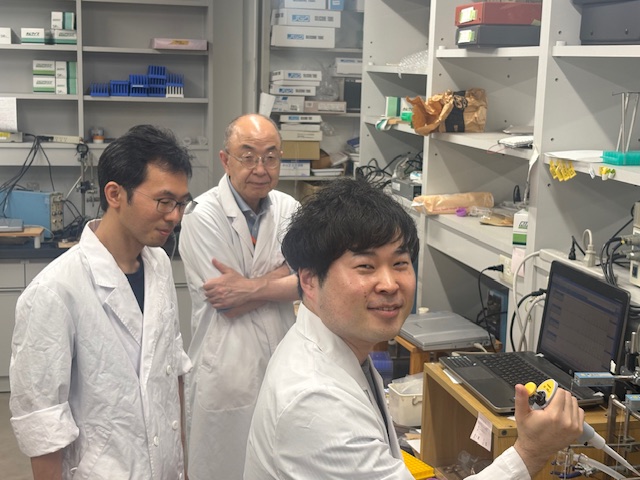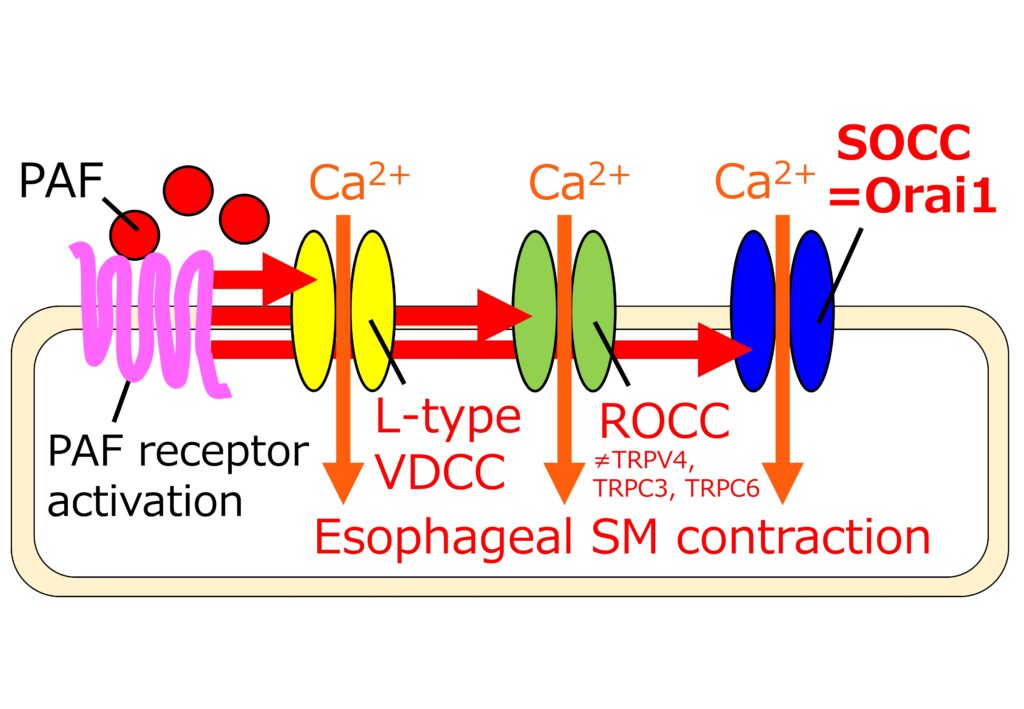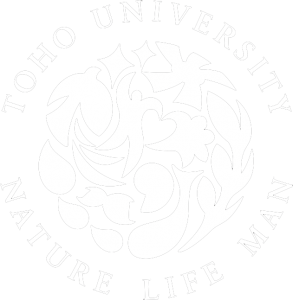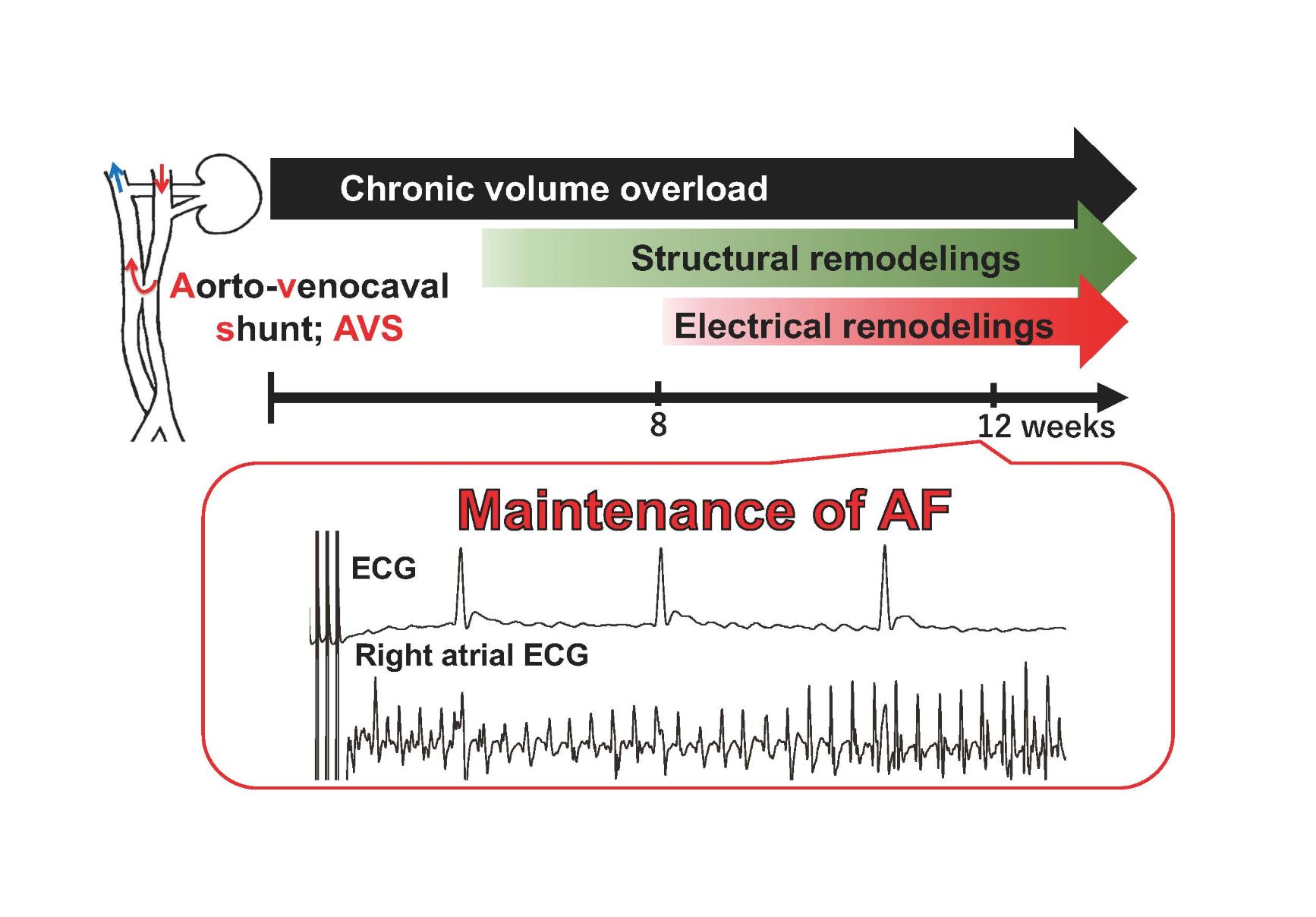July 4, 2025
Scientists Reveal How a Key Inflammatory Molecule Triggers Esophageal Muscle Contraction — Unlocking Clues for Allergy-Related Disorders

From left: Dr. Kento Yoshioka, Dr. Yoshio Tanaka, Dr. Keisuke Obara
A research group led by Dr. Keisuke Obara, Dr. Kento Yoshioka, and Professor Yoshio Tanaka from the Department of Chemical Pharmacology, Faculty of Pharmaceutical Sciences, Toho University, has uncovered important details about how platelet-activating factor (PAF)—a powerful molecule involved in inflammation and allergic reactions—triggers contractions in the smooth muscles of the esophagus. Their findings could pave the way for new treatments targeting gastrointestinal symptoms associated with allergies, asthma, and anaphylaxis.
What is PAF?
PAF (platelet-activating factor) is a bioactive lipid molecule produced by various cells in the body, including immune cells, during inflammatory responses. It plays a major role in processes such as blood clotting, immune cell recruitment, and the onset of severe allergic reactions, including anaphylaxis, by making blood vessels more permeable and stimulating smooth muscle contraction in tissues like the lungs, intestines, and esophagus.
Although PAF is essential for immune defense, excessive or misdirected PAF activity is linked to pathological conditions such as asthma, inflammatory bowel disease, and allergic reactions that affect breathing and digestion.
Study Highlights
In their study, the researchers investigated how PAF causes contractions in the esophageal smooth muscle of rats—a process that contributes to symptoms like chest tightness and difficulty swallowing during allergic episodes.
They discovered that PAF triggers calcium entry into muscle cells through three distinct types of calcium channels:
- L-type voltage-dependent calcium channels (VDCCs),
- Receptor-operated calcium channels (ROCCs),
- Store-operated calcium channels (SOCCs).
Importantly, the study revealed that non-VDCC channels—particularly a protein called Orai1 that forms SOCCs—are the main drivers of PAF-induced muscle contraction in the esophagus. This challenges the traditional focus on VDCCs in smooth muscle pharmacology.
“Our findings suggest that targeting these non-traditional calcium channels could offer more effective treatments for esophageal and gastrointestinal symptoms seen in allergic conditions,” said lead researcher Dr. Keisuke Obara.
Implications for Future Therapies
By better understanding which calcium channels PAF uses to trigger muscle contraction, the study lays the groundwork for developing new drugs that can more precisely block unwanted muscle activity without affecting normal muscle function elsewhere.

A schematic summary of this study The contractile responses of esophageal smooth muscle (SM) induced by platelet-activating factor (PAF) involve the activation of L-type voltage-dependent calcium channels (L-type VDCCs), receptor-operated calcium channels (ROCCs), and store-operated calcium channels (SOCCs), with Orai1 serving as a key component of the SOCC pathway.
Journal:
Biological and Pharmaceutical Bulletin (June 28, 2025)
Title:
Pharmacological characteristics of extracellular Ca2+ influx pathways responsible for platelet-activating factor-induced contractions in rat esophagus smooth muscle: Involvement of L-type, receptor-operated, and store-operated Ca2+ channels
Authors:
Keisuke Obara, Sana Takahashi, Miho Otake, Mako Fujiwara, Daiki Kato, Momoko Tanaka, Tomohiro Ura, Mio Yamashita, Azusa Murata, Kento Yoshioka, Taichi Kusakabe, Keisuke Takahashi, Keisuke Kato, Yoshio Tanaka
DOI: 10.1248/bpb.b25-00233
Abstract URL: https://doi.org/10.1248/bpb.b25-00233
READ MORE RESEARCH NEWS - PHARMACEUTICAL SCIENCES
Undergraduate Programs
– Medicine
– Pharmaceutical Sciences
– Science
– Nursing
– Health Science
Graduate Programs
–Medicine
–Pharmaceutical Sciences
–Science
–Nursing
RESEARCH
– News
– Guidelines & Policies
– Support Offices
– Facilities
– Security Export Control
Non-Degree Programs
– Clinical Elective Program
– International Physician Observership Program


.jpg)

